Over the past couple decades, we have found ourselves in an exponential shift from developing total athletes to developing “specialist”.
Younger and younger it seems that kids are moving to being single-sport athletes and becoming specialists to particular a position. While this is not necessarily a problem, since many athletes might just enjoy that one sport, it has opened the door to a world of training toxicity and misinformation.
The world has become so engulfed in sport-specific training that we cold-shoulder total athletic development. It’s no wonder we are where we are now…an athletic community of exponential over-use injuries and young athletes who burn out before they even get to graduate high school.
Not to mention the toll it takes on the mental health of our young ones.
It’s long overdue that we get back to the roots of developing whole, well-rounded, athletes because the stats don’t lie. The better ATHLETE will make more plays. The better ATHLELTE receives more scholarship opportunities. The better ATHLETE will be more equipped to succeed at the higher levels of competition.
So, let’s dive into the Athletic Development Pathway and discuss how each pillar affects the other and how growth in ALL areas is the real secret to unlocking your athlete’s potential.
Pillar 1: General Athleticism
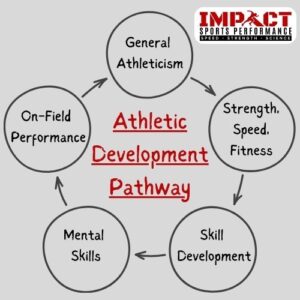 This is really the base, or foundation, for all athletes. While I know we could sit here and name off a dozen or so traits that could fall under this category, I think it’s best to narrow it down to a handful that I am sure we can agree make up the dominating percentage of athleticism. Those traits are:
This is really the base, or foundation, for all athletes. While I know we could sit here and name off a dozen or so traits that could fall under this category, I think it’s best to narrow it down to a handful that I am sure we can agree make up the dominating percentage of athleticism. Those traits are:
a. Coordination
b. Balance
c. Basic Movement Skill
d. Spatial Awareness
e. Body Control
Unfortunately, general athleticism seems to be one of the most overlooked training pillars. Typically swept under the rug by many due to its lack of intensity, or maybe it’s the simplicity, many think is below their capabilities.
Many younger athletes have become so “Sport Specific” with their training throughout the whole year that they seldom go back to basics and just work on being a better MOVER.
This is unfortunate because this is also one of the easiest pillars to improve! It can even be just a part of your warm-up. Some of my favorite things to add into a training session to work on general athleticism are skip variations, crawling, single-leg balance work, mutli-directional lunges, and even juggling.
Games such as Tail-Tag and Knee Tag are also great options when it comes to spatial awareness, body control, and basic movement skills!
The time spent on this pillar is very dependent on the age of your athletes (both biological age and training age). Athletes 8-12 years old should spend significantly more time here than most 15+ year old athletes, but they, too, should still be spending some time here.
It appears that general movement skills are easier to develop at younger ages, before movement patterns have been fully ingrained in an athlete’s nervous system. If this training is ignored for too long, especially in younger athletes, you end up closing a very important window in their development and lowering their overall performance potential.
Pillar 2: Strength, Speed, Fitness
 The second stop on this journey through the Athletic Development Pathway is Strength, Speed, and Fitness. Just like General Athleticism, this CAN and SHOULD be trained throughout the entire year…yes even during the competition season.
The second stop on this journey through the Athletic Development Pathway is Strength, Speed, and Fitness. Just like General Athleticism, this CAN and SHOULD be trained throughout the entire year…yes even during the competition season.
Athletes who consistently train speed and strength through the year have a significantly higher performance ceiling than those who choose to focus purely on sport- skill and/or playing as many games as possible. Athletes who continuously work on their strength, speed, and fitness are also more likely to move on and succeed at the next level.
By increasing the strength, speed, and fitness of our athletes over time we help them kick down the door to improving their on-field performance by purely being more physically capable of doing more work than their opponents. This is the goal!
We want to create athletes who can practice harder, longer, and more often without breaking down, and this kind of work helps make that possible. We want our athletes to be stronger, more explosive, faster, more conditioned, and overall more prepared to dominate the task at hand than their opponents.
All things being equal, the correctly prepared athlete will beat the unprepared athlete.
Pillar 3: Skill Development
Pillar 3 is Skill Development, also known as sport practice. This, along with Pillar 5, has become the focus point of many athletes throughout their entire training year. This has caused many of the issues I pointed out earlier. Don’t get me wrong, skill development is SUPER important…I will never disagree with that. But when skill development starts to take precedence over the other 4 pillars all the time…well then there is an issue.
Here is what an Off-Season training program SHOULD look like for MOST athletes

Versus what you currently see with many Off-Season training programs:

Skill Development should be the biggest beneficiary from Pillars 1 and 2. As our athleticism, strength, speed, and fitness increase so does our ability to “dial in” and make corrections to much smaller details in sport skill training. As our skill development increases, so does the POTENTIAL for better On-Field Performance. Whether or not that potential is seized is largely dependent on our 4th Pillar.
Keep in mind that the amount of skill work needed will be determined by the current level of skill, the age of the athlete, and which sport is being played. For example, a 15-year-old athlete who is just picking up basketball will probably need more skill work than a 10-year-old off season football player. Sports like golf and tennis also lend themselves to performing more skill practice. The point is to not forgo Pillars 1 & 2 and spend all your time on Pillar 3.
Pillar 4:Mental Skills
One of the key determining factors on whether the growth in Pillars 1-3 will transfer to our 5th Pillar is number 4…Mental Skills.
In a perfect world, growth in the first three pillars would give us the confidence to perform and dominate our competition physically and mentally. Often, however, athletes will struggle in this area.
A lack of confidence or negative self-talk will drastically hinder an athlete’s ability to perform at their highest level. Therefore, it is important to work with your athletes and teach them to “Flip the Switch”. This means that, when the time comes and the game is on, they are out there with the highest confidence in themselves, their training, and the right mindset to DOMINATE.
Be mindful though, this is not the same for ALL athletes. While some may prefer to be “amped up” and vocal, others may respond better to a fun and light-hearted environment. Some may even prefer to be in their own space listening to some music or just enjoying the silence.
Recognizing and incorporating this practice into training will drastically help the athlete’s on-field performance become more and more
consistent.
Pillar 5:In Game Performance
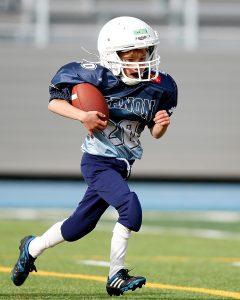 As a coach, this is a very special pillar because we get to witness our athlete’s success and growth after all their hard work and time put into training. It is also where we will get a lot of feedback on what changed over the course of the training and what still needs work.
As a coach, this is a very special pillar because we get to witness our athlete’s success and growth after all their hard work and time put into training. It is also where we will get a lot of feedback on what changed over the course of the training and what still needs work.
Do they need better body awareness?
More speed/agility?
More skill development?
More confidence?
Which pillar is lacking the most?
By breaking down their performance in their sport we can equip ourselves as coaches with the beginning knowledge for the next training focus. It is important to keep in mind that the prioritization of each pillar is fluid. It will change through the year depending on what is needed and where the athlete is in their calendar year.
Careful evaluation will help coaches decide which pillar requires the most attention.
Athletes who are in-season will not be spending as much time in Pillars 1 and 2 as off-season athletes but more so Pillars 3, 4, and 5…but it is important to still include some of 1 and 2.
The opposite is true for off-season athletes where more time/energy will be spent improving 1-3/4 and minimal of Pillar 5.
In conclusion, we can see how all five pillars work together in the pathway and how the improvement, or lack thereof, can affect the others.
The goal should be to grow each one every year which will lead to a significantly higher athletic potential, increased on-field performance, and likelihood of moving on to the next level.
 -Cole Walderzak-BS, HSSCS, CSAS, CSCS
-Cole Walderzak-BS, HSSCS, CSAS, CSCS
Cole is Director of Training for Impact Sports Performance-Brighton and Director of online training. Cole interned with Head Strength and Conditioning Coach, Jason Novak (who is now the Head Football Strength and Conditioning Coach at MSU) before interning at Total Performance Training Center in Wixom, MI with Jim Kielbaso.
For more information on developing athletes, the IYCA Certified Athletic Development Specialist is the gold-standard certification for anyone working with athletes 6-18 years old.
The course materials were created by some of the most experienced and knowledgeable professionals in the industry, and the content is indisputably the most comprehensive of any certification related to athletic development. Learn more about the CADS certification here:
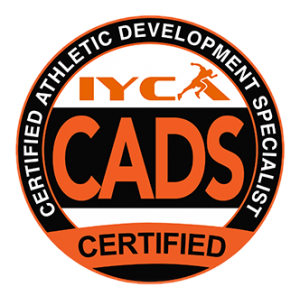
 Jim Kielbaso is the President of the IYCA and Owner of
Jim Kielbaso is the President of the IYCA and Owner of 
 Warm-Ups, why bother? Great question! In this blog I share 3 Massive Benefits of warm-ups.
Warm-Ups, why bother? Great question! In this blog I share 3 Massive Benefits of warm-ups. Massive Benefit #2: Reducing Injury Risk
Massive Benefit #2: Reducing Injury Risk
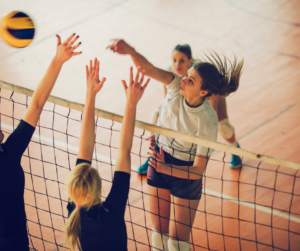 In this article we are discussing power development for athletes.
In this article we are discussing power development for athletes.

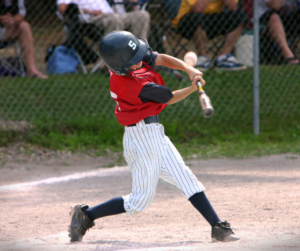 Rotational Power Development for Hitting & Throwing Sports can be overlooked but it is extremely beneficial for sports like baseball, softball, football, track, basketball and many others.
Rotational Power Development for Hitting & Throwing Sports can be overlooked but it is extremely beneficial for sports like baseball, softball, football, track, basketball and many others.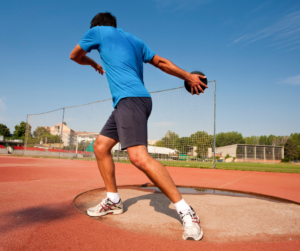 performance and injury prevention.
performance and injury prevention.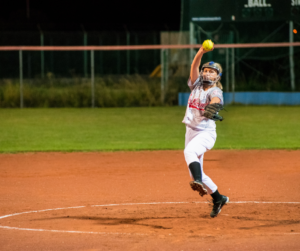 MB Rotation/Scoop Toss
MB Rotation/Scoop Toss 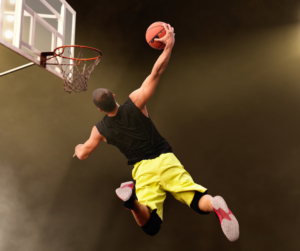 Pogo Jumps are one of the best exercises to reduce ground contact time and get athletes used to popping into the ground and reproducing that force quickly in the upward direction.
Pogo Jumps are one of the best exercises to reduce ground contact time and get athletes used to popping into the ground and reproducing that force quickly in the upward direction. In soccer, speed is a multidimensional skill that goes beyond mere running speed. There are principles of Soccer Speed, that when applied, can be highly effective.
In soccer, speed is a multidimensional skill that goes beyond mere running speed. There are principles of Soccer Speed, that when applied, can be highly effective.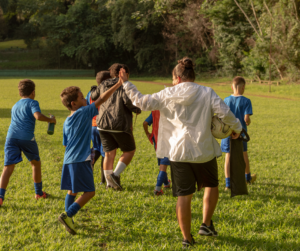
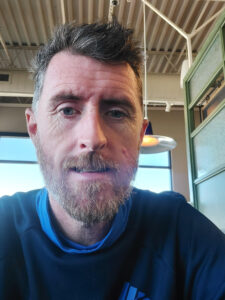 Beni is an IYCA Ambassador, Entrepreneur and CEO. He’s earned UEFA coaching badges and a BA in Physical Fitness & Sports Conditioning. He has professional experience across soccer, golf, and rugby, expanding programs in Texas and Ireland. He has founded GameLikeSoccerCoaching and BBsports Fitness and Nutrition.
Beni is an IYCA Ambassador, Entrepreneur and CEO. He’s earned UEFA coaching badges and a BA in Physical Fitness & Sports Conditioning. He has professional experience across soccer, golf, and rugby, expanding programs in Texas and Ireland. He has founded GameLikeSoccerCoaching and BBsports Fitness and Nutrition. This is really the base, or foundation, for all athletes. While I know we could sit here and name off a dozen or so traits that could fall under this category, I think it’s best to narrow it down to a handful that I am sure we can agree make up the dominating percentage of athleticism. Those traits are:
This is really the base, or foundation, for all athletes. While I know we could sit here and name off a dozen or so traits that could fall under this category, I think it’s best to narrow it down to a handful that I am sure we can agree make up the dominating percentage of athleticism. Those traits are: The second stop on this journey through the Athletic Development Pathway is Strength, Speed, and Fitness. Just like General Athleticism, this CAN and SHOULD be trained throughout the entire year…yes even during the competition season.
The second stop on this journey through the Athletic Development Pathway is Strength, Speed, and Fitness. Just like General Athleticism, this CAN and SHOULD be trained throughout the entire year…yes even during the competition season.

 As a coach, this is a very special pillar because we get to witness our athlete’s success and growth after all their hard work and time put into training. It is also where we will get a lot of feedback on what changed over the course of the training and what still needs work.
As a coach, this is a very special pillar because we get to witness our athlete’s success and growth after all their hard work and time put into training. It is also where we will get a lot of feedback on what changed over the course of the training and what still needs work. -Cole Walderzak-BS, HSSCS, CSAS, CSCS
-Cole Walderzak-BS, HSSCS, CSAS, CSCS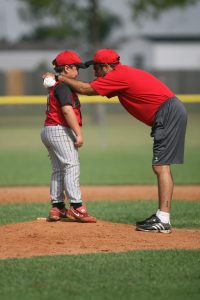 Coaching youth, is a specialist role and we must treat it as such. Obtaining the label “coach” doesn’t make a instantly qualified coach.
Coaching youth, is a specialist role and we must treat it as such. Obtaining the label “coach” doesn’t make a instantly qualified coach. It was no surprise that the athletes polled expressed that their favorite coaches were those who were most effective and that their least favorite coaches had more of the characteristics expressed as ‘ineffective’.
It was no surprise that the athletes polled expressed that their favorite coaches were those who were most effective and that their least favorite coaches had more of the characteristics expressed as ‘ineffective’.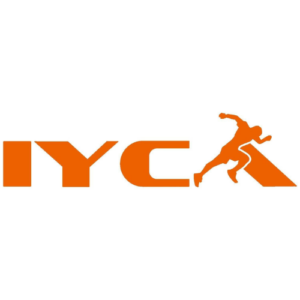
 As an industry, we are playing a losing game right now and it’s time to look in the mirror. Consider this, if seven out of ten employees quit their job at a company due to burnout or overuse, it’s fair to assume the company would be concerned.
As an industry, we are playing a losing game right now and it’s time to look in the mirror. Consider this, if seven out of ten employees quit their job at a company due to burnout or overuse, it’s fair to assume the company would be concerned.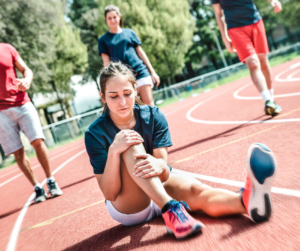

 If you are looking to learn more and further your knowledge on how to develop athletes long term in a healthy and appropriate way but aren’t in need of a certification, then a great next step would be
If you are looking to learn more and further your knowledge on how to develop athletes long term in a healthy and appropriate way but aren’t in need of a certification, then a great next step would be  Athletic development across the lifespan is a complex process that is heavily influenced
Athletic development across the lifespan is a complex process that is heavily influenced 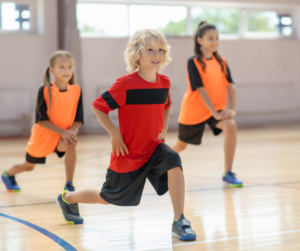 Developing the fundamental movement skills (e.g., walking, running, and jumping) happens early on in a child’s life. Unfortunately, being unable to perform fundamental movement skills can restrict later opportunities, which is why it is vital to develop physical literacy early in the child’s life.
Developing the fundamental movement skills (e.g., walking, running, and jumping) happens early on in a child’s life. Unfortunately, being unable to perform fundamental movement skills can restrict later opportunities, which is why it is vital to develop physical literacy early in the child’s life. 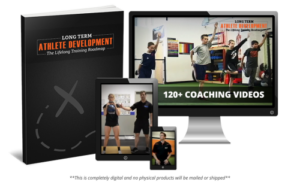 The very first step in any effort towards change, is to gain education. Our
The very first step in any effort towards change, is to gain education. Our It is no secret that the development of the young athlete is multifaceted and it is the responsibility of the coach and/or trainer to take into consideration developmental, physical, and psychological aspects of training.
It is no secret that the development of the young athlete is multifaceted and it is the responsibility of the coach and/or trainer to take into consideration developmental, physical, and psychological aspects of training. 
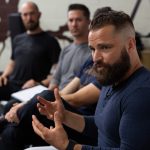 Brett Bartholomew is a strength and conditioning coach, author, consultant, and Founder of Art of Coaching™. His experience includes working with athletes both in the team environment and private sector along with members of the United States Special Forces and members of Fortune 500 companies.
Brett Bartholomew is a strength and conditioning coach, author, consultant, and Founder of Art of Coaching™. His experience includes working with athletes both in the team environment and private sector along with members of the United States Special Forces and members of Fortune 500 companies. t of questions about how to get your foot in the door or how to become a high school strength and conditioning coach. I also happen to work in several high schools, I post a lot of content from weight rooms, and I love working in high school strength and conditioning, so it makes sense that people ask those questions. But, is this job really right for you?
t of questions about how to get your foot in the door or how to become a high school strength and conditioning coach. I also happen to work in several high schools, I post a lot of content from weight rooms, and I love working in high school strength and conditioning, so it makes sense that people ask those questions. But, is this job really right for you?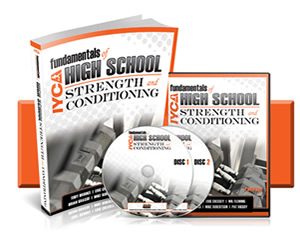

 3. Calisthenics: The simple stuff like we did back in P. E. Remember jumping jacks? How about the lost art of jumping rope? Calisthenics are a fantastic tool for warming up and coordination activities. Simple? Yes… but much more effective than jogging around a soccer field if the goal is to improve athleticism.
3. Calisthenics: The simple stuff like we did back in P. E. Remember jumping jacks? How about the lost art of jumping rope? Calisthenics are a fantastic tool for warming up and coordination activities. Simple? Yes… but much more effective than jogging around a soccer field if the goal is to improve athleticism.
 Jeremy Frisch is the owner and director of
Jeremy Frisch is the owner and director of 
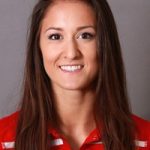 Jordan Tingman – CSCS*, USAW L1, ACE CPT, CFL1 is a graduate of Washington State University with a B.S. in Sports Science with a Minor in Strength and Conditioning. She completed internships with the strength & conditioning programs at both Washington State University and Ohio State University, a Graduate Assistant S & C Coach at
Jordan Tingman – CSCS*, USAW L1, ACE CPT, CFL1 is a graduate of Washington State University with a B.S. in Sports Science with a Minor in Strength and Conditioning. She completed internships with the strength & conditioning programs at both Washington State University and Ohio State University, a Graduate Assistant S & C Coach at 
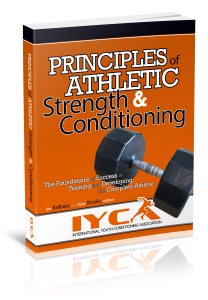

 Brett Klika is a youth performance expert and a regular contributor to the IYCA who is passionate about coaching young athletes. He is the creator of the
Brett Klika is a youth performance expert and a regular contributor to the IYCA who is passionate about coaching young athletes. He is the creator of the  can be done anywhere. Many coaches also look for ways to help athletes get better at push ups, but simply doing them more often isn’t a great way for many people to improve, especially those who aren’t capable of performing many good push ups.
can be done anywhere. Many coaches also look for ways to help athletes get better at push ups, but simply doing them more often isn’t a great way for many people to improve, especially those who aren’t capable of performing many good push ups.